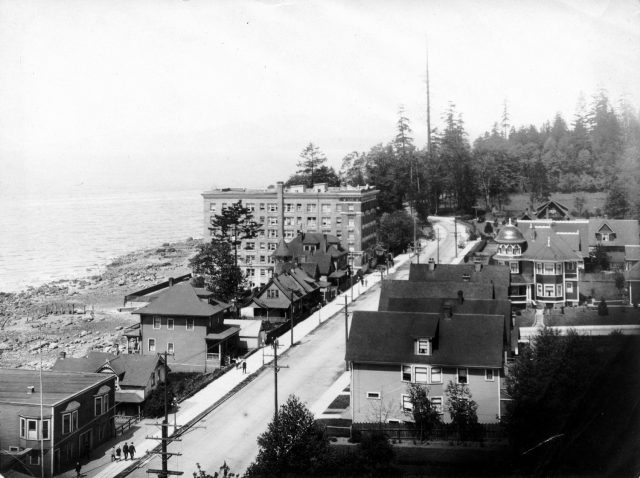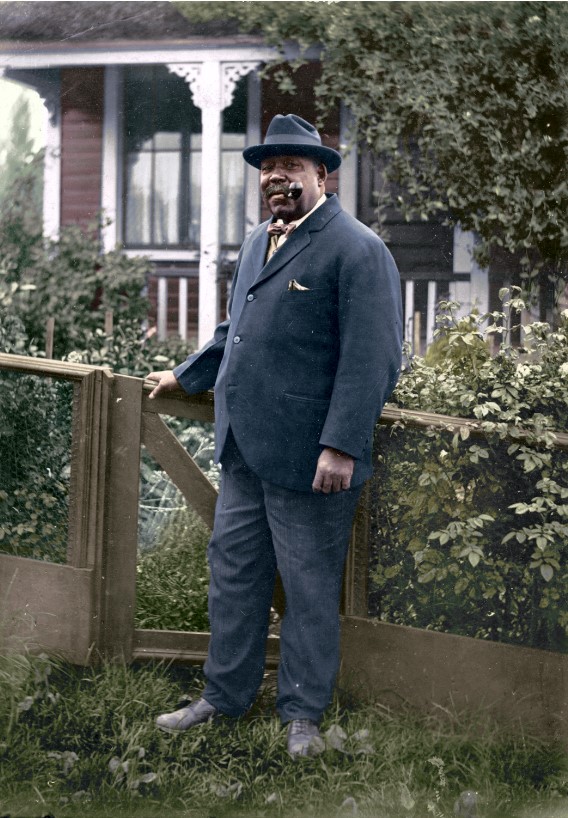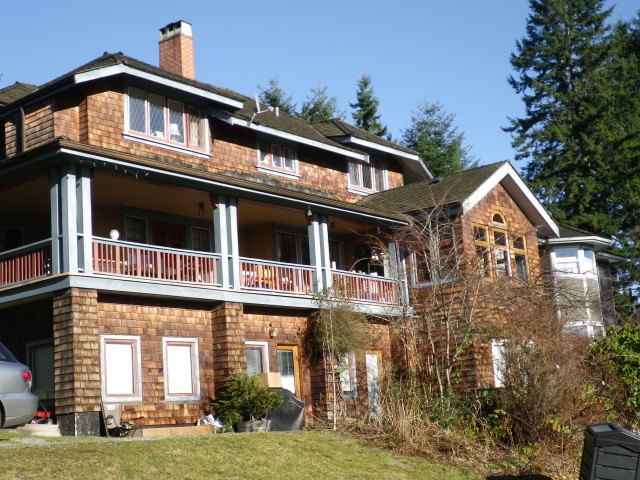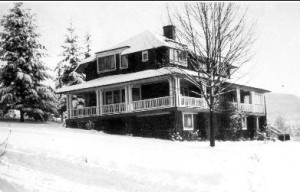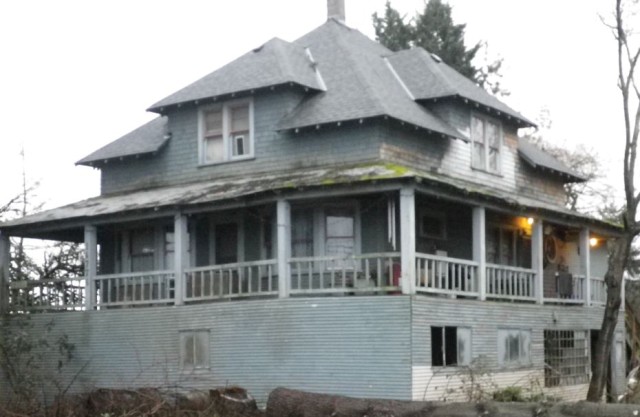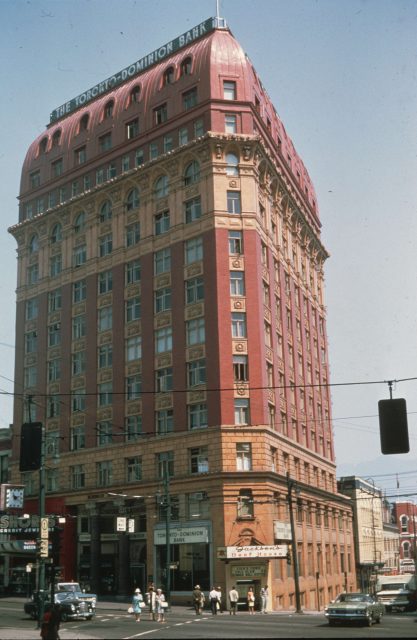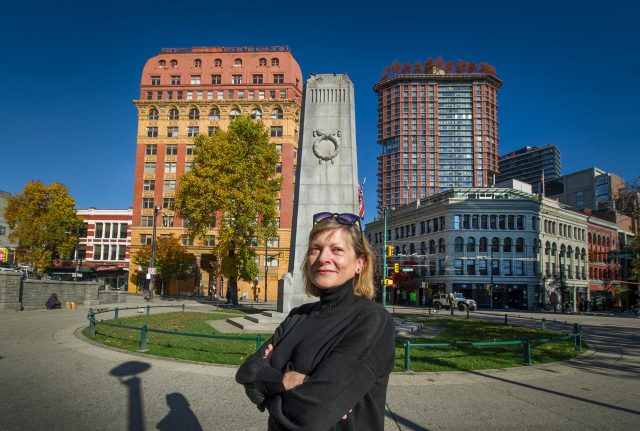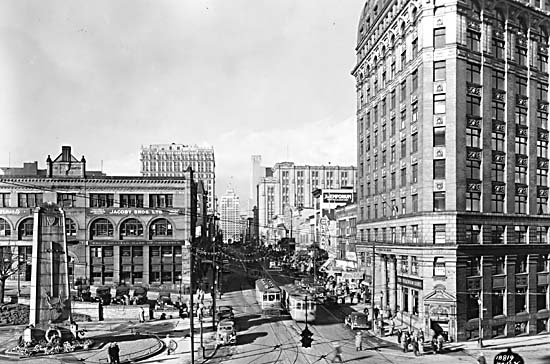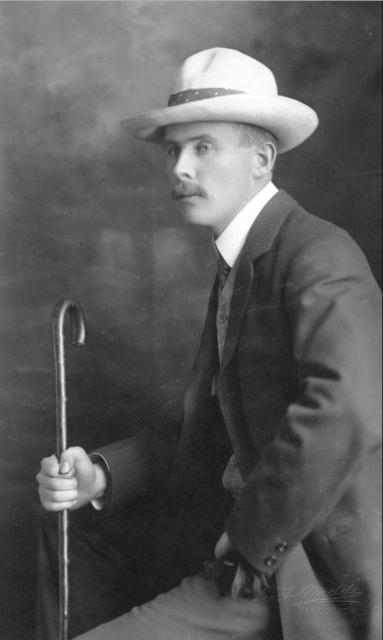Tom Carter is a Vancouver-based artist known for exploring the city’s gritty urban environments.
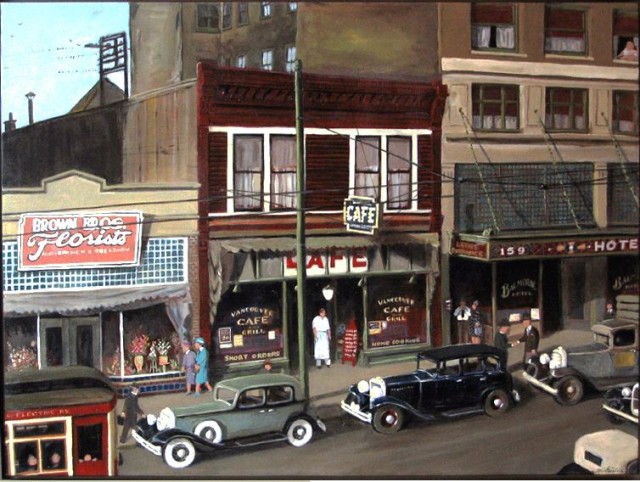
Heritage Loft:
I visited Tom Carter in his heritage loft a couple of weeks ago. It was the same afternoon that we climbed up to the top of the Sun Tower, in what was in 1912, the tallest building in the British Empire. Tom lives next door in a 100-year-old converted warehouse designed for Storey & Campbell Limited by William Tuff Whiteway, the same architect who designed the Sun Tower for Mayor L.D. Taylor.
His loft looks out onto Pender Street and its floor to ceiling windows give a great view of Victory Square and some of the building stock we’ve managed to hang onto such as the Dominion and the Standard Buildings. The brick walls of the loft make a fitting background for Tom’s paintings of Vancouver’s street scenes and heritage buildings—many now long gone.
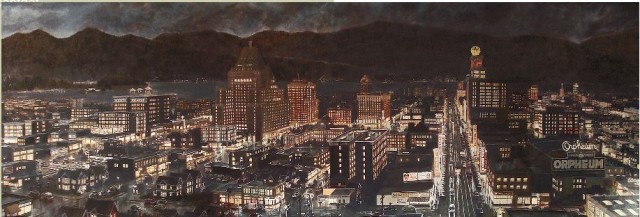
Missing Heritage:
Tom is fascinated by Vancouver’s early theatre industry and has an amazing collection of photographs, books and even some of the original plaster that he managed to salvage on his daily trips to the Pantages Theatre during its destruction two years ago.
Before he starting painting, Tom lived the rock and roll dream. He co-owned and managed a recording studio in Surrey working with artists like Long John Baldry, and members of Chilliwack and Trooper. Tom played keyboard on a lot of the albums, and his beautiful concert grand takes up a prominent position in his loft.
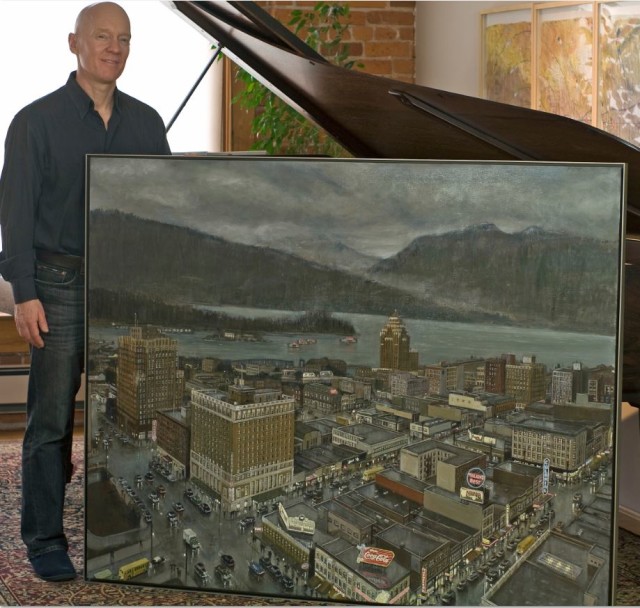
Music:
“We did blues albums that were nominated for Juno awards, a lot of roots rock,” says Tom. “I loved it, it was a lot of fun, but then it got to the point it just wasn’t fun anymore.”
Tom bought the loft in 2003, turned 40, stopped drinking, and dabbled in real estate.
“I found myself sitting in this place, I was unemployed, and I didn’t have a clue how I was going to make the next mortgage payment.”
Then he started to research his family history and had a kind of epiphany.
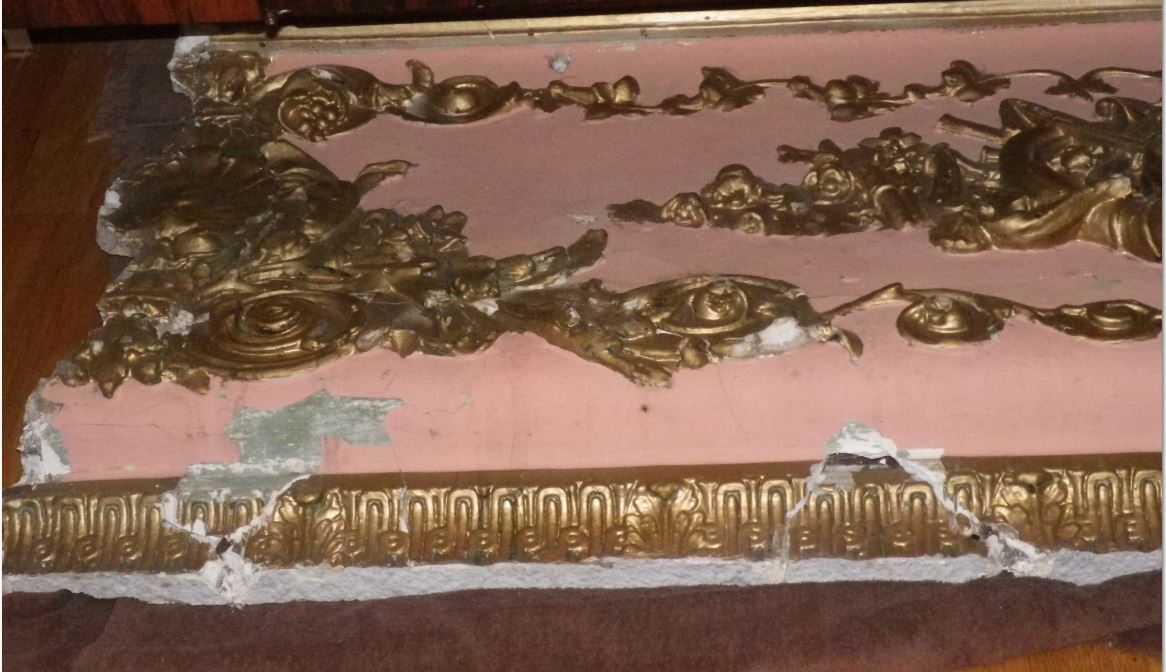
“I realized my grandfather was the same age—39—when he moved to Vancouver from the Prairies,” says Tom. “I knew his life from the early 40s on because he had businesses in the Okanagan, he was mayor of Oliver, but I didn’t know much about this transition period, and I was going through the same transition.”
Vancouver Cafe:
Tom learned that his grandfather had owned the Vancouver Cafe and Grill next to the Balmoral Hotel on East Hastings. His father told him about the bombing of the Royal Theatre across the street in 1933, and how a piece of the Royal had smashed into his restaurant.
Tom hit Special Collections at the Vancouver Public Library and the Vancouver Archives and searched through old newspaper articles and photos from the ‘30s and ‘40s. The stories melded with his own memories as a kid in the ‘60s coming into the city to see films at the Orpheum and the Strand.
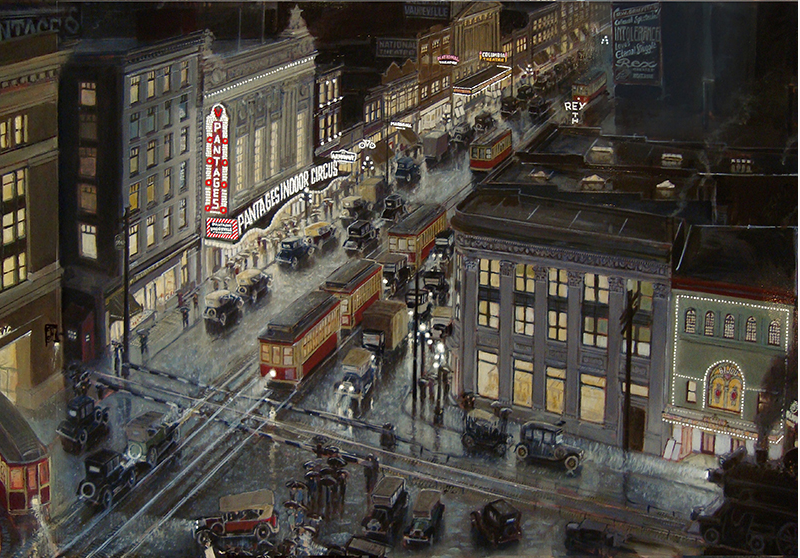
“There was still Woodwards downtown, we still had the PNE parade—all those Vancouver institutions that are gone now,” he says. “I was trying to find a style—something I really want to paint.”
Tom sold his first painting at a small gallery in West Vancouver for $900, his second for $1,250 and his third for $13,500. Now his sought-after paintings hang on boardroom walls and in private collections all over the city.
RElated:
- The Lost Scrapbooks of the Marco Polo
- Our Missing West End
- The Dupont Street Train Station
- 2021 Cold Case Canada Halloween Special Podcast
- Whose Chinatown?
© All rights reserved. Unless otherwise indicated, all blog content copyright Eve Lazarus.



